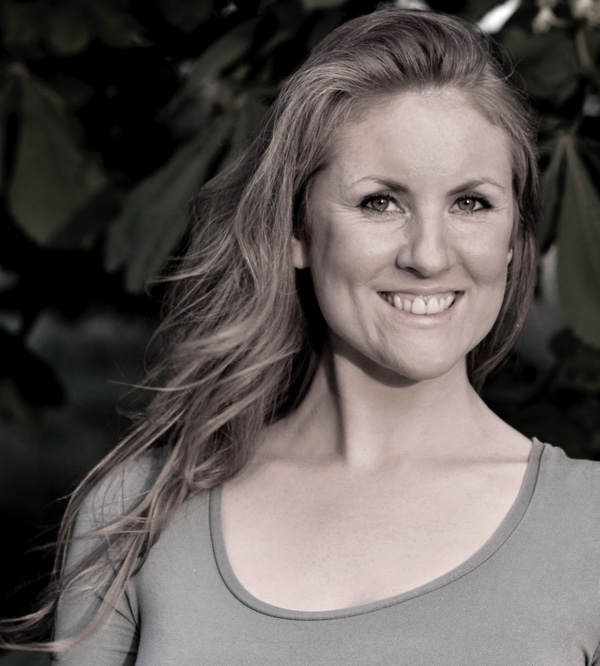Interacting in Lucid Dreams with Your Unconscious Mind – A Troubleshooting Guide
By Robert Waggoner © 2017 All Rights Reserved
In my books and my talks, I encourage lucid dreamers to engage the ‘awareness behind the dream’ (or subconscious mind/inner self), which often responds to questions or requests that the lucid dreamer may ask. For example, I suggest that a person begin by asking simple questions, such as, ‘Hey dream, show me something important for me to see!’ – and then waiting to see what happens. Normally, something new will appear in the lucid dream in response, or the entire dreamscape will change.
As I have discussed in my books and talks, the responses often seem dedicated to instructing and educating the lucid dreamer. In some instances, the lucid dreamer may ask a question, and the larger awareness respond to say that the question seems based on an errant premise. Or in other cases, the larger awareness may respond to say that the person does not seem in the proper frame of mind to handle the response. These lucid dreams show that the larger awareness appears to care about the lucid dreamer, and does not simply ‘echo’ back responses to non-sense questions or requests (it discriminates).
Sometimes, however, people will write to me and tell me about their problems with this process of engaging the awareness behind the dream. In this article, I hope to provide a guide to help lucid dreamers ‘troubleshoot’ the process.
- Difficulty asking a question: Some people tell me that they become lucid, and decide to ask a question of the awareness behind the dream, when suddenly they can not ‘ask’ the question – it gets stuck in their throat! They can not ask the question. They feel perplexed and frustrated.
Here, the problem seems to occur in the lucid dreamer. Some may feel conflicted about this process, have a subtle fear about communicating with their subconscious mind/inner self, or even asking a question. Their concern then appears as an inability to speak! In almost all cases, the lucid dreamer has to look at their fear, their beliefs, their question and resolve it first, before proceeding successfully.
For example, imagine a lucid dreamer who has successfully asked many times, ‘Show me something important for me to see!’ and then received a fascinating response. But now, they decide to ask a really ‘big’ question, and as they get ready to say it, it becomes stuck in their throat. What happened? Obviously, they have some conflicted feelings about the ‘big’ question or fear a possible response, and it shows in their inability to speak.
- Poorly worded questions: Some people write to tell me about an incident where they did not receive an appropriate response. However, when they share the exact question they asked, then the ‘problem’ seems to connect to the poorly worded nature of the question. In my book, I recount how an artist asked, ‘Let me look for art that I can create’ – and would spend the entire lucid dream looking ‘for art’. However, when he changed his request to ‘Let me look at art that I can create’ then suddenly art work would appear on a nearby wall. Success occurred when he properly worded his request.
The point: You have to consider carefully the question. Does it seem clear? Does it truly express your intent? Does the question have hidden assumptions? All of these points can make a huge difference. Take time to craft the question. Start out with simple questions, before getting into more complex or powerful questions or requests.
- Two or more intents in a question or request: Some people write and share with me that they received no response. When they share the question or request, it has two completely divergent intents or goals. For example, how do you respond to, “Show me the most nutritious food for me and how to move forward in my college education”? It seems difficult to respond, because the question or request does not seem simple, clear or direct; rather it seems divided, unclear and disconnected.
- Receive a response, but do not understand: Some people ask a question, and get a visual response (meaning a new dream symbol, event or object appears). However, they write to complain, ‘I don’t get it. I asked this question, and then saw a stoplight with the red light flashing. What does that mean?’
In these cases, a thoughtful lucid dreamer can ask a follow-up question in the lucid dream, in order to understand the response. Or upon waking, they can work with the ‘symbol’ and see how it connects to their question. For this reason, I encourage lucid dreamers to work on techniques to understand their own personal dream symbolism.
- Receive a response, but fail to recognize it: I once recall a person who wrote me about her lucid dream. In it, she looked into a dream mirror and asked her larger awareness, “Show me the problem with my boss!” and continued to see her self in the mirror. She asked again, “Show me the problem with my boss!” Again, only she appeared in the mirror. She tried one more time; same result. She wrote to ask me, ‘Why?’
Here, you may see that she possibly received a response, but simply did not care to recognize it. Or it did not fit her hope or expectation. She preferred that she learn something about her boss and his issues, when the dream seemed to suggest that she had the issue.
6) Treating the inner self as a magic Genie: Sometimes people write me, and share lucid dreams in which the ‘awareness behind the dream’ did not act like a magic Genie! In my books, I make the point that the inner awareness seems dedicated to educating and instructing the person – and NOT delivering every ego-centered wish that a lucid dreamer may wish. The larger awareness (of which you are a part) appears to have vast creativity, knowledge and understanding. Properly approached, it can help you grow and learn on numerous fronts.
When interacting with the ‘awareness behind the dream,’ it seems important to remember that the person (i.e., you) and the process play a role in the response. By understanding that, you can better troubleshoot the response.
Exploring the larger dimensions of the self helps us see the potential and possibilities of lucid dreaming. Used wisely, it can act as a path of accelerated growth for thoughtful students of lucid dreaming.
##
Shifting Focus in Lucid Dreams….
By Robert Waggoner © 2016 All Rights Reserved
Intentionally and unintentionally throughout the day, you shift the focus of your awareness. Moving from waking to sleeping and back again provides powerful evidence for a significant shift in awareness. Similarly, transitioning from waking to deep meditating offers an intentional shift in focus and awareness. Even during a boring conversation, you may notice your awareness unintentionally moving away to an inner memory that suddenly seems more captivating.
Profound shifts in focus and awareness also occur in moving from regular dreaming to lucid dreaming. Upon seeing a dinosaur and wondering how to respond, you suddenly realize, ‘Wait a second. This is a dream!’ At that moment, according to some neurophysiological research, you move to a ‘hybrid state of consciousness’ in which the ancient dreaming portion of the brain simultaneously engages portions of the cerebral cortex involved in self-reflection, awareness and decision-making.
However, did you know that from within a lucid dream, you can shift your awareness again, and enter an OBE state?
Making a Shift in Consciousness
Rarely discussed, except by experienced lucid dreamers, the concept of shifting states of awareness from lucid dreaming to an OBE seems not only possible, but can easily show the distinctive qualities of lucid dreams and the OBE state. Equally plausible is the idea of shifting from an OBE to a lucid dream, if you know how to do it. Essentially, awareness appears infinitely malleable.
I first became aware of this concept of shifting awareness while reading Jane Roberts’ book, Seth, Dreams & Projections of Consciousness (1986). There, the issue of lucid dreams (or “awake seeming dreams”) and OBEs become placed under the broader umbrella of “projections of consciousness” with lucid dreams and OBEs being singled out as two distinct forms, each having unique characteristics.
Significantly, the book suggests that a lucid dreamer may slip from the lucid dreaming form into (or out of) an OBE form without realizing it. For this reason, an explorer of consciousness has to be particularly observant and discriminating.
As I read this, I began to think about certain special lucid dreams. Somehow, the lucid dream shifted to one of considerable agility, stability and length, instead of my normal concern about maintaining my awareness and not getting re-entranced by the dream. Looking back, I realized I may have shifted from a lucid dream to the relative stability of the OBE form, and simply considered it at incredibly stable lucid dream.
Engaging the Awareness Behind the Dream
Concurrent with this new idea, in a lucid dream in 1985 I discovered the “awareness behind the dream” or a non-visible awareness which lucid dreamers could ask questions of and make requests. As I repeatedly noticed the responsive nature of this layer of Self (something which Castaneda mentions much later in his 1993 book, The Art of Dreaming, as the “dream emissary”), I managed to shift from a lucid dream to an OBE by simply requesting my intent to this larger awareness: “I want to move to the next form!”
Suddenly at that moment, my lucid dream perception ended, and I found myself consciously aware in the kitchen of our house (about 10 feet below my sleeping body), aware within an OBE. I felt stunned at this amazing shift – from lucid dream to local environment OBE – especially to see my own house (or a seemingly perfect replica) with the dawn light, infusing the outdoors.
Taking advantage of this amazing opportunity, I flew out the window with extraordinary ease and agility, through various houses and around the neighborhood. I even managed, I believe, to frighten one of the neighbors as she lay in bed. Her husband had recently passed over, and though she seemed a bit frightened to see me in the doorway, I assured her that the spirit survives physical death and my presence there showed proof. (Interestingly, later when her home was sold, I visited it during an open house and confirmed interior structural details that I noticed in this OBE.)
As a technique, this ‘requesting the assistance of the larger awareness’ seemed quite astounding. Perhaps it helped that I already felt comfortable engaging the larger awareness in lucid dreams before I tried this, and that I had a fair number of OBEs too. With that level of past experience, this specific technique seemed simple, quick, direct and most importantly, successful.
Later, when reading Carlos Castaneda’s book, The Art of Dreaming, I learned of other approaches to making this or similar transitions. The shaman don Juan suggests to Carlos that various “gates” of dreaming exist. To access the second gate, he suggests “One
Additionally, Castaneda reports that in an altered state, he receives more advice from a mysterious woman, “Then in dreaming the exercise was to dream of falling asleep a second time in the same [body] position as the dreaming had been started. She promised me extraordinary results, which she said were not possible to foretell.” (p 230) Basically, I took this to mean that I should use lucid dreaming to find myself sleeping in bed, and then adopt that same position, as I then fell asleep in the lucid dream.
As I recall, when I did this latter approach in a lucid dream, I instantly shifted awareness to another level (most similar to an OBE because of its stability and seeming objectivity) and had some interesting conversations there. Doing the former approach, I had an equally profound experience, which resulted in apparent minutes of moving through, or falling through, ‘darkness’ until finally, fascinating light and profound images were shown to me.
Aware within a dream, you have an extraordinary platform from which to explore the infinity of awareness, particularly, if you have techniques and the ability to let go of any fears or concerns. Shifting awareness can be as easy (and profound) as ‘Waking up!’
##
References:
Jane Roberts, Seth, Dreams & Projections of Consciousness, (Walpole, NH: Stillpoint Publishing), 1986
Carlos Castaneda, The Art of Dreaming, (New York: Harper Collins), 1993
Robert Waggoner, Lucid Dreaming: Gateway to the Inner Self, (Needham, MA: Moment Point Press) 2009.








Thank you Robert for these wonderful articles about lucid dreaming. Each of them contain a wonderful advice to lucid dreamers, which often, like this one, give wonderful tips on how to advance the expectance of lucid dreaming and take it to another level.
I just wanted to express my appreciation of your work. Thank you!